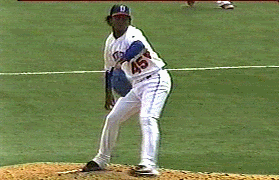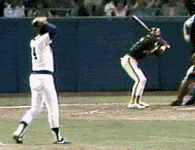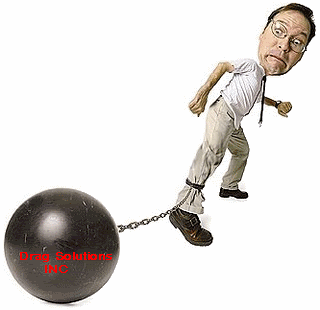My reason for persisting with the “foot in contact with the ground at release” question comes from a reliable source that related this was the latest instruction in drag. Thought you might be able to confirm this one way or the other. Let’s hope it’s not so, as it’s a bit absurd to think that so many of the best where mechanically inept.
quote:You can read what you like into that statement, but in my interpretation, "about the same time" is not at all the same as saying "at exactly the same moment". To me, this statement allows for a range of possibilities, including guys who do release the ball just before their post foot pops up to guys that you have shown, who release the ball from .03 to .06 sec (1 to 2 vid frames) after the post foot pops up into the air.
A closer look at some of my first clips reveal that the back foot has actually left the ground several frames before release at 30 fps. This may appear to be splitting hairs, but I would think someone serious about the biomechanics of throwing and it’s sequencing would think it’s significant. Obviously when the foot is exiting the ground this early, there is going to be little or no dragline.

In the case of Martinez, young Ryan, Gibson, Schilling, and I suspect many others; the foot leaves the ground shortly after high cocked and is definitely airborne by the time of external rotation. Tap down, if it occurs, is after release. Whether this creates a problem determining where the airborne foot is at release, so you can in turn, determine where to stand on the rubber I wouldn’t know.
Given your interest in low release point pitchers, I accessed my own data bank

Is it possible that sidearm pitchers might be slightly more inclined to get their foot in the air because of the greater emphasis on rotation in the horizontal plane? Many other factors involved of course.
quote:Still: If a young guy with no drag-line is struggling and it looks like lack of stability and balance are clear problems in his delivery, well...I wouldn't hesitate to suggest adjustments to his posture that will happen to produce a drag-line (note: None of this includes any instruction to "drag your foot"...the drag-line is a result of stable posture, not the other way around...that really would be the tail wagging the dog, and maybe that's part of the misunderstanding between us?).
This would certainly be a better approach than obsessing over the back foot. However it seems highly probable that father instructors who have students who don’t drag, will encourage them to alter their mechanics so they do, by focusing on the foot. How else can they determine where to stand on the rubber without a good drag line?

Well…. as I’m sure you’re aware, ones position on the rubber according to the “old school” had more to do with movement and location than an opinion regarding what is mechanically efficient. I don’t know what Kevin Brown’s dragline looked like but suppose the new drag rules dictated that he should move to the other side of the rubber? What to do if there is a conflict between what ones “stuff” does from one location, and where one is supposed to stand on the rubber for greater efficiency?
More problems created than solved dragging everyone down this road? Much ado…much ado… and I’m most definitely done.
Yardbird,
Having witnessed several hostile takeovers by fanatics,
